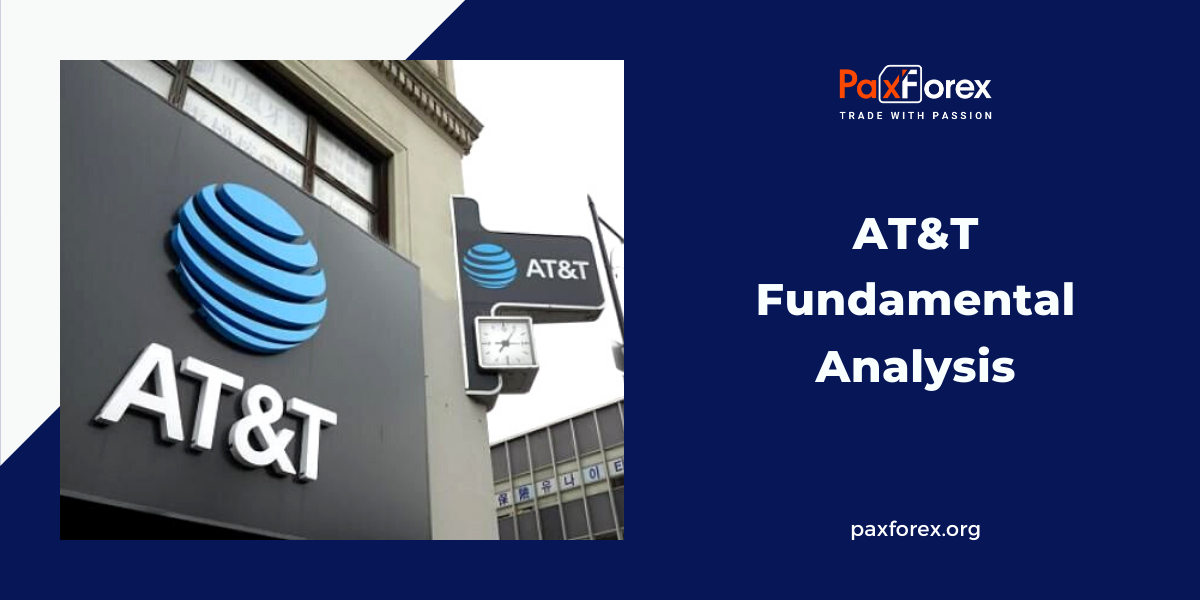
Source: PaxForex Premium Analytics Portal, Fundamental Insight
There is no segment of the stock market that has performed worse this year than the communications sector. Reportedly, shares of fixed-line, wireless, broadband, and cable carriers have collectively declined more than 38 percent this year, and have underperformed all others over the past three, five, and ten years.
However, one company has managed to buck the trend: AT&T. There are a few peer companies that are doing better - T-Mobile, for example, is up 24% this year. Still, AT&T stock has been very volatile since the spin-off and merger of its entertainment division with Warner Bros. Discovery in April. AT&T stock eventually recovered most of its losses during 2022, down just 0.5% for the year.
In fact, the stock is now 30% above the low it reached in mid-October. With that in mind, here's a look at possible expectations for the telecom company's stock over the next few years.
AT&T is no longer the company it was a year ago. By getting rid of a lot of non-core assets other than its entertainment division, which led to a significant reduction in its dividend, the telecom company has become much leaner and more narrowly focused. Its dividend is now also much more sustainable.
Revenues are rising again, up 3.2 percent in Q3 to $29.1 billion, while the company continues to attract hundreds of thousands of new customers. So far this year, AT&T has added more than 2.2 million new customers to its postpaid phone business. In contrast, Verizon has been losing customers in that segment so far this year.
What's more, this happened despite price increases and the fact that the company hasn't advertised its services as aggressively as its competitors. Chief Operating Officer Jeff McElfresh told analysts that the company "hasn't been the most aggressive in the market for quite some time," even with the start of the holiday shopping season, when AT&T refrained from "aggressive" offers on Black Friday.
The carrier will need the revenue stream that new customers will bring because it still has a huge debt load to reduce.
AT&T's acquisition of Time Warner burdened it with billions of dollars in debt, and at the end of Q3, the company still had nearly $124 billion in long-term debt with $1.4 billion in interest expense.
The $43 billion raised through the creation of Warner Bros. Discovery $43 billion would go a long way toward reducing those liabilities, but there are other demands on that money, such as the need to invest in rolling out its 5G networks.
It's been about a decade since carriers dramatically increased data download speeds on wireless networks, so continually updating wireless infrastructure to support 5G speeds will help AT&T drive additional demand in the smartphone market.
The company's goal is to improve profitability to support its dividend, which currently stands at 5.8 percent annually.
Investors were initially alarmed that AT&T was cutting its payout after the spin-off, which explains the steep drop in the company's stock after the fact. And while shareholders received shares of Warner Bros. Discovery as part of the deal, shares of the owner of the HBO Max streaming service have virtually been in free-fall since its market debut.
AT&T said even before the spin-off that it wants a dividend of 40% to 43% of free cash flow (FCF), but it still has some way to go to reach that goal.
The company reiterated its goal of $14 billion FCF this year, $2 billion less than originally projected, but more than enough to cover its $8 billion dividend liability for the year. That's 57% of FCF, but AT&T is hoping for continuous improvement in the coming years.
All of this suggests that AT&T stock is trading at a significant discount. Given that AT&T is capable of producing such a huge amount of excess cash despite - or perhaps because of - the spin-off, the valuation is incredibly attractive. So despite the stock's big surge from the lows, there's still plenty of runway ahead that investors can comfortably jump on.
As long as the price is above 18.00, follow the recommendations below:
- Time frame: D1
- Recommendation: long position
- Entry point: 19.21
- Take Profit 1: 20.00
- Take Profit 2: 21.00
Alternative scenario:
If the level of 18.00 is broken-down, follow the recommendations below:
- Time frame: D1
- Recommendation: short position
- Entry point: 18.00
- Take Profit 1: 17.00
- Take Profit 2: 16.00













